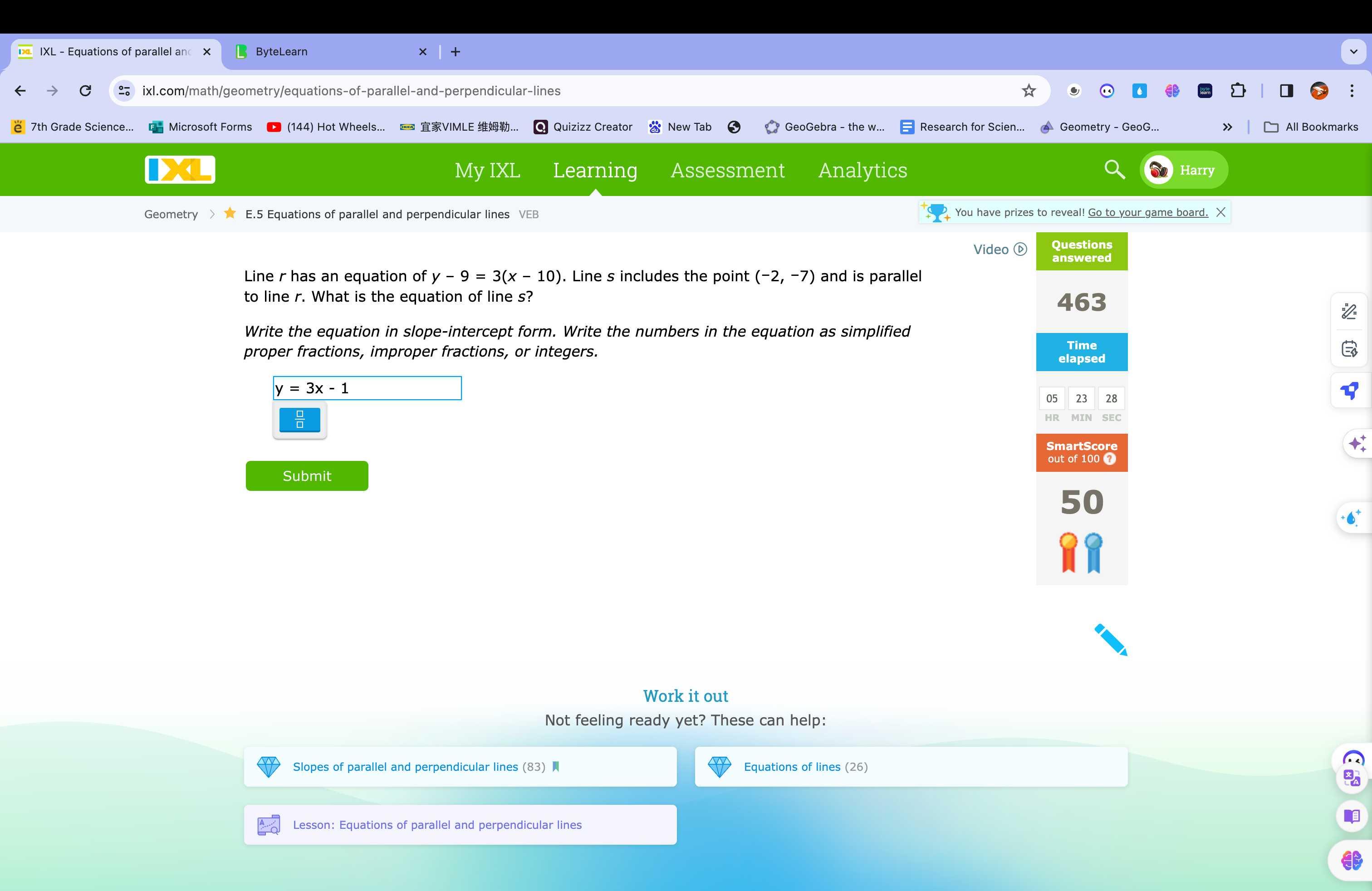AI tutor
Welcome to Bytelearn!
Let’s check out your problem:

Line has an equation of . Line includes the point and is parallel to line . What is the equation of line ?Write the equation in slope-intercept form. Write the numbers in the equation as simplified proper fractions, improper fractions, or integers.
Full solution
Q. Line has an equation of . Line includes the point and is parallel to line . What is the equation of line ?Write the equation in slope-intercept form. Write the numbers in the equation as simplified proper fractions, improper fractions, or integers.
- Identify slope of line : Identify the slope of line from its equation.The equation of line is given in point-slope form: . The coefficient of is the slope of line , which is .
- Determine slope of line : Determine the slope of line . Since line is parallel to line , it will have the same slope. Therefore, the slope of line is also .
- Write point-slope form: Write the point-slope form of line using its slope and the given point.The point-slope form is , where is the slope and is the given point. Substituting the slope and the point , we get .
- Simplify to slope-intercept form: Simplify the point-slope form to get the slope-intercept form.First, simplify the equation: . Then distribute the slope: . Finally, isolate by subtracting from both sides: .
- Find y-intercept: Complete the simplification to find the y-intercept.Subtracting from gives us , so the equation becomes .
More problems from Interpret parts of quadratic expressions: word problems
QuestionGet tutor help
QuestionGet tutor help
QuestionGet tutor help
QuestionGet tutor help
QuestionGet tutor help
QuestionGet tutor help
QuestionGet tutor help
QuestionGet tutor help
